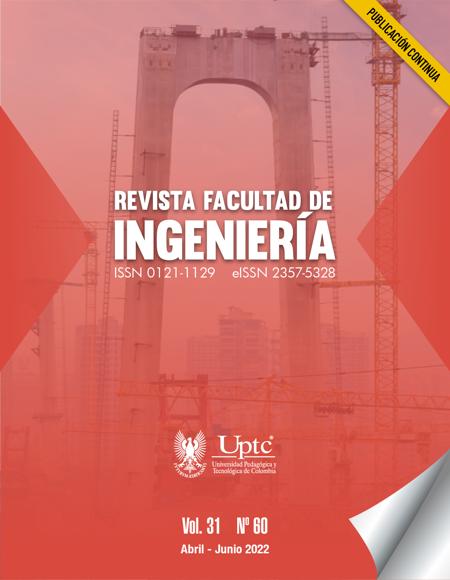Characterization of Energy Portability Tools to Implement in Colombia

Abstract
Electricity is one of the fundamental components that drive the economy, i. e. the higher the economic growth, the higher the energy consumption and vice versa. Therefore, the energy market must be able to cover the increase in energy demand and establish strategies for efficient energy use. In the United Kingdom, the implementation of modern technologies in the electric system has been boosted with an automatic energy supplier switching process known as auto-switching. In this strategy, users are not exclusively bound to the local supplier and have the freedom to switch. On the other hand, Colombia could liberalize the energy market through an auto-switching pilot program to increase competition among energy suppliers by deregulating the tariffs. This would facilitate the supplier selection process for new clients by allowing them to choose the supplier with the lowest rate, best quality, and desired energy source, among others. This paper presents a characterization of the attributes and functionalities of the main auto-switching tools in the United Kingdom. Additionally, it proposes an adapted auto-switching tool for the Colombian energy market considering information from Enel Codensa related to the registration of new potential customers, affiliation with energy suppliers, offers views, and notifications for customers, among others. To liberalize the Colombian energy market, it is necessary to promote these types of tools that provide greater benefits to users and suppliers.
Keywords
auto-switching, tools, characterization, users, suppliers, energy portability
Author Biography
Martha-Eliana Mendoza-Becerra
Roles: Formal Analysis, Investigation, Writing – review & editing.
Hugo-Armando Ordoñez-Eraso
Roles: Formal Analysis, Investigation, Writing – review & editing.
Miguel-Ángel Niño-Zambrano
Roles: Formal Analysis, Investigation, Writing – review & editing.
Carlos-Alberto Cobos-Lozada
Roles: Formal Analysis, Investigation, Writing – review & editing.
Rodolfo García-Sierra
Roles: Formal Analysis, Investigation, Writing – Original Draft.
References
- N. V. Lakshmi, G. S. Vinoth, J. S. Binoj, N. Manikandan, “Design of high efficiency energy harvesting circuit using dual switching technique,” Materials Today: Proceedings, vol. 39, pp. 725–730, 2020. https://doi.org/10.1016/j.matpr.2020.09.306 DOI: https://doi.org/10.1016/j.matpr.2020.09.306
- Y. Chen, R. Mamon, F. Spagnolo, N. Spagnolo, “Renewable energy and economic growth: A Markov-switching approach,” Energy, vol. 244, e123089, 2022. https://doi.org/10.1016/j.energy.2021.123089 DOI: https://doi.org/10.1016/j.energy.2021.123089
- Y. F. Ceballos, J. A. Zambrano, J. R. Vel, “The energy as a tool of development in rural areas not interconnected,” Investigación e Innovación en Ingeniería, vol. 1, no. 3, pp. 44–50, 2015.
- C. A. Barreto Nieto, J. Campo Robledo, “Relación a largo plazo entre consumo de energía y PIB en América Latina: Una evaluación empírica con datos panel,” Ecos Economicos, vol. 16, no. 35, pp. 73–89, 2012. https://doi.org/10.17230/ecos.2012.35.4 DOI: https://doi.org/10.17230/ecos.2012.35.4
- UPME, Proyecciones de demanda de energía eléctrica y gas natural 2021-2035, 2021.
- UPME , Plan de Acción Indicativo de Eficiencia Energética 2017-2022, 2016. http://www1.upme.gov.co/DemandaEnergetica/MarcoNormatividad/PAI_PROURE_2017-2022.pdf
- C. Feldhaus, J. Lingens, A. Löschel, G. Zunker, “Encouraging consumer activity through automatic switching of the electricity contract - A field experiment,” Energy Policy, vol. 164, e112855, 2022. https://doi.org/10.1016/j.enpol.2022.112855 DOI: https://doi.org/10.1016/j.enpol.2022.112855
- European Commission, Second consumer market study on the functioning of the retail electricity markets for consumers in the EU Final, 2016.
- H. Hampton, A. Foley, D. F. Del Rio, B. Smyth, D. Laverty, B. Caulfield, “Customer engagement strategies in retail electricity markets: A comprehensive and comparative review,” Energy Research & Social Science, vol. 90, e102611, 2022. https://doi.org/10.1016/j.erss.2022.102611 DOI: https://doi.org/10.1016/j.erss.2022.102611
- A. J. Ros, International Experiences in Retail Electricity Markets The Australian Competition and Consumer Commission, 2018.
- L. R. Boscán, European Union retail electricity markets in the Green Transition: The quest for adequate design, 2020. DOI: https://doi.org/10.1002/wene.359
- E. A. Bekirov, S. N. Voskresenskaya, “Development of the Automatic Switch for Electric Power Transmission in the General,” in International Multi-Conference on Industrial Engineering and Modern Technologies, 2019, pp. 1–5. https://doi.org/10.1109/FarEastCon.2019.8934867 DOI: https://doi.org/10.1109/FarEastCon.2019.8934867
- A. L. Klopčič, J. Hojnik, Š. Bojnec, “What is the state of development of retail electricity markets in the EU?,” The Electricity Journal, vol. 35, no. 3, e107092, 2022. https://doi.org/10.1016/j.tej.2022.107092 DOI: https://doi.org/10.1016/j.tej.2022.107092
- S. Palacios, E. Saavedra, “Alternative policies for the liberalization of retail electricity markets in Chile,” Utilities Policy, vol. 49, pp. 72–92, 2017. https://doi.org/10.1016/j.jup.2017.06.009 DOI: https://doi.org/10.1016/j.jup.2017.06.009
- M. Fontana, M. Iori, C. R. Nava, “Switching behavior in the Italian electricity retail market: Logistic and mixed effect Bayesian estimations of consumer choice,” Energy Policy, vol. 129, pp. 339–351, 2019. https://doi.org/10.1016/j.enpol.2019.01.060 DOI: https://doi.org/10.1016/j.enpol.2019.01.060
- K. A. Fange, “Electricity retailing and price dispersion,” Energy Economics, vol. 106, 2021, e105762, 2022. https://doi.org/10.1016/j.eneco.2021.105762 DOI: https://doi.org/10.1016/j.eneco.2021.105762
- C. Toogood, The Best Energy Auto-Switching Services, 2021. https://www.forbes.com/uk/advisor/energy/best-auto-switching-services/
- J. Jones, Best Auto-Switching Energy Companies, 2021. https://www.energyswitching.co.uk/best-auto-switching-energy-companies/
- C. Serrano, Un Modelo Integral para un Profesional en Ingenieria, 1st ed., Colombia: Unilibros, 2008.
- Ministerio de Minas y Energía, Proyecto de Resolución No. 705 002, 2022.
- UPME, IREES, TEP, Corpoema, Primer Balance de Energía Útil para Colombia y Cuantificación de las Perdidas Energéticas relacionadas y la brecha de eficiencia energética: Resumen Ejecutivo BEU Sector Residencial y Terciario, 2019. https://www1.upme.gov.co/DemandayEficiencia/Documents/Balance_energia_util/BEU-Residencial.pdf